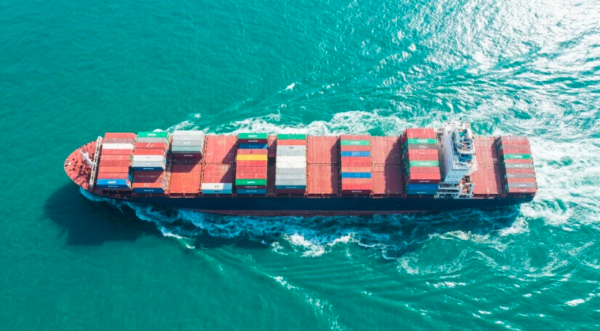In the age of globalization, container ships have become the backbone of international trade. These massive vessels are responsible for transporting the majority of goods we use daily, from electronics to clothing and food. The container ship plays a vital role in ensuring smooth supply chains, despite facing challenges like high operational costs, port congestion, container shortages, and increasing fuel prices. For businesses involved in global logistics, understanding how container ships work is crucial to optimizing shipping strategies and maintaining supply chain resilience.

What Is a Container Ship?
A container ship is a large cargo vessel designed specifically for transporting standardized intermodal containers. Unlike traditional cargo ships that carry goods in bulk or loose form, a container ship uses containers that are easy to load, stack, and transfer between ships, trucks, and trains. This design revolutionized global shipping by increasing efficiency and reducing handling time. Without the container ship, international trade would be slower, more expensive, and less reliable. These ships have greatly contributed to the affordability and accessibility of goods across the world.
The Evolution of Container Ships
The first container ship set sail in the mid-20th century, marking the beginning of a logistics revolution. Since then, container ships have grown significantly in size and capacity. Technological advancements in shipbuilding and navigation have enabled the construction of ultra-large container vessels that can carry over 20,000 TEU (Twenty-foot Equivalent Units), making it possible to move vast quantities of cargo between continents efficiently.
Types of Container Ships
Container ships are categorized based on their size and cargo capacity:
Feeders: These small vessels (up to 2,000 TEU) are ideal for shallow ports and serve as connectors between smaller ports and major hubs. They often come equipped with cranes to handle cargo independently.
Feedermax: Mid-sized ships with around 3,000 TEU capacity, commonly used for regional transport and special cargo.
Panamax: Built to pass through the original Panama Canal, these ships carry 4,000–5,000 TEU.
Post-Panamax: Larger than Panamax, they exceed 5,000 TEU and must take alternative routes due to size restrictions.
New Panamax: Designed after the 2016 Panama Canal expansion, these ships can transport up to 12,500 TEU.
Ultra Large Container Vessel (ULCV): With capacities exceeding 14,000 TEU, ULCVs link the busiest global ports, like Shanghai and Rotterdam.
Design Features of Container Ships
A container ship’s architecture is engineered for both capacity and safety:
- Bridge: The control center for navigation, engine management, and weather monitoring.
- Cranes: While smaller ships may have onboard cranes, larger ones depend on port infrastructure for loading and unloading. The largest cranes can lift up to 100 tons.
- Cargo Holds: These are specially designed to secure containers, some equipped to handle refrigerated units requiring power.
- Container Security: Systems like twist locks, steel lashings, and buttresses ensure containers remain stable during voyages, even in rough seas.
Types of Containers Used
Different goods require different container types:
- Dry Storage Containers: The most common type, sealed but non-refrigerated.
- Flat Rack Containers: Ideal for oversized cargo.
- Open Top Containers: Suited for tall items that don’t fit in standard containers.
- Refrigerated Containers (Reefers): Maintain temperature control for perishables.
- Side Open Containers: Allow easier access to wide or long cargo.
- Tank Containers: Designed for transporting liquids or gases.
- Half-Height Containers: For heavy but compact cargo.
Container Ship Transportation Process
- Pre-Departure: Orders are processed, and documentation like the Bill of Lading is prepared.
- Loading: Containers are delivered to ports by truck and loaded onto ships using cranes.
- Journey: The ship travels to its destination while maintaining communication and safety protocols.
- Unloading: At the destination port, containers are offloaded, cleared through customs, and sent to their final location by truck or rail.
Conclusion
Container ships have reshaped the global economy, enabling even small businesses to participate in international trade. Compared to the labor-intensive, unstandardized cargo handling of the past, containerization has brought speed, security, and cost efficiency. As international trade continues to grow, the container ship remains a critical element in connecting supply chains around the world.
For businesses looking to optimize their shipping and logistics operations, choosing the right logistics partner is essential. Interfreight Logistics offers reliable and cost-effective container shipping solutions. With extensive global networks, experienced personnel, and modern logistics systems, Interfreight ensures your goods are shipped securely, on time, and at competitive rates, making global trade easier for businesses of all sizes.


